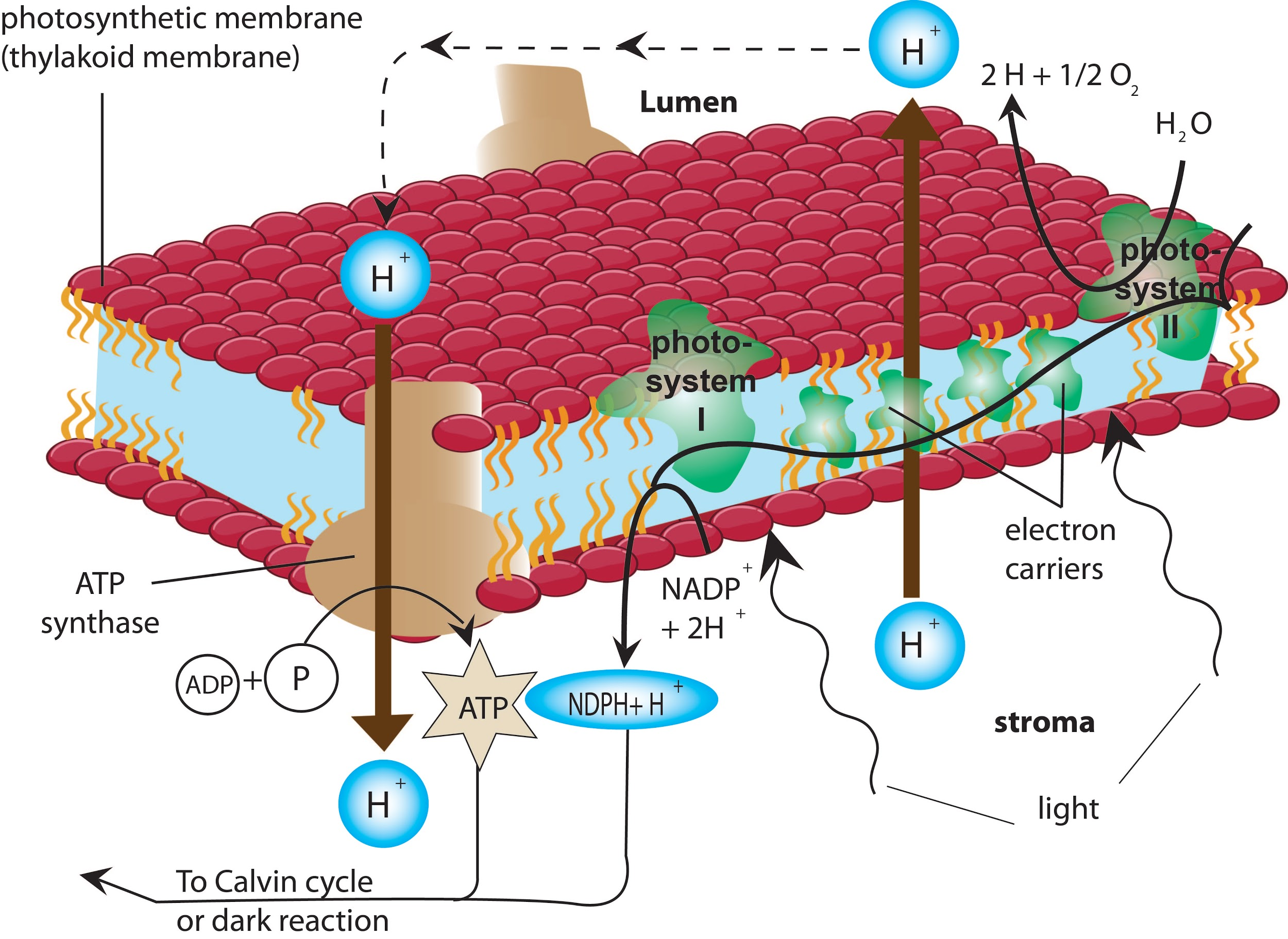
Thylakoid of grana have enzyme for
(a). ${ C }_{ 3 }$ pathway
(b). ${ C }_{ 4 }$ pathway
(c). Photophosphorylation
(d). None of the above
Answer
555.9k+ views
Hint: During this process, light energy is used to create a high-energy electron donor and a lower-energy electron acceptor. Electrons at that point move precipitously from giver to acceptor through an electron transport chain. All living beings produce ATP, which is the general energy money in life.
Complete answer:
The stacks of thylakoids are called grana. They are connected with an in-depth system of tubules. The chlorophyll is present inside the thylakoid membranes along with other pigments that are arranged in antenna arrays to capture light energy for two photosystems called photosystem I and photosystem II. In many plants, both photosystems are used in an electron transport process, that yields energy inside such an ATP (photophosphorylation) and decreased coenzymes to the stroma of the chloroplast to be used in the synthesis of carbohydrates.
Additional Information: Cyclic photophosphorylation occurs on the stroma lamellae or fret channels. In cyclic photophosphorylation, the high energy electron released from P700 of PS1 flows down during a cyclic pathway. In cyclic electron flow, the electron starts in a color complex called photosystem I, passes from the essential acceptor to ferredoxin and afterward to plastoquinone, at that point to cytochrome ${ b }_{ 6 }{ f }$ (a comparable complex thereto found in mitochondria), at that point to plastocyanin prior to getting back to Photosystem-1. This transport chain creates a proton-thought process power, pumping ${ H }^{ + }$ particles over the film; this delivers a degree inclination which will be wont to control ATP synthase during chemiosmosis. This pathway is understood as cyclic photophosphorylation, and it produces neither ${ O }_{ 2 }$ nor NADPH. Unlike non-cyclic photophosphorylation, ${ NADP }^{ + }$ does not accept the electrons; they are instead sent back to the cytochrome ${ b }_{ 6 }{ f }$ complex.
So the correct answer is ‘Photophosphorylation’.
Note: During the process of photosynthesis, the phosphorylation of ADP to shape ATP utilizing the energy of daylight is called photophosphorylation. Cyclic photophosphorylation happens in both aerobic and anaerobic conditions. Just two wellsprings of energy are accessible to living beings: daylight and reduction-oxidation (redox) responses. All living beings produce ATP, which is the widespread energy cash of life. In photosynthesis, this ordinarily includes photolysis, or photodissociation, of water and a nonstop unidirectional progression of electrons from water to photosystem II.

Complete answer:
The stacks of thylakoids are called grana. They are connected with an in-depth system of tubules. The chlorophyll is present inside the thylakoid membranes along with other pigments that are arranged in antenna arrays to capture light energy for two photosystems called photosystem I and photosystem II. In many plants, both photosystems are used in an electron transport process, that yields energy inside such an ATP (photophosphorylation) and decreased coenzymes to the stroma of the chloroplast to be used in the synthesis of carbohydrates.
Additional Information: Cyclic photophosphorylation occurs on the stroma lamellae or fret channels. In cyclic photophosphorylation, the high energy electron released from P700 of PS1 flows down during a cyclic pathway. In cyclic electron flow, the electron starts in a color complex called photosystem I, passes from the essential acceptor to ferredoxin and afterward to plastoquinone, at that point to cytochrome ${ b }_{ 6 }{ f }$ (a comparable complex thereto found in mitochondria), at that point to plastocyanin prior to getting back to Photosystem-1. This transport chain creates a proton-thought process power, pumping ${ H }^{ + }$ particles over the film; this delivers a degree inclination which will be wont to control ATP synthase during chemiosmosis. This pathway is understood as cyclic photophosphorylation, and it produces neither ${ O }_{ 2 }$ nor NADPH. Unlike non-cyclic photophosphorylation, ${ NADP }^{ + }$ does not accept the electrons; they are instead sent back to the cytochrome ${ b }_{ 6 }{ f }$ complex.
So the correct answer is ‘Photophosphorylation’.
Note: During the process of photosynthesis, the phosphorylation of ADP to shape ATP utilizing the energy of daylight is called photophosphorylation. Cyclic photophosphorylation happens in both aerobic and anaerobic conditions. Just two wellsprings of energy are accessible to living beings: daylight and reduction-oxidation (redox) responses. All living beings produce ATP, which is the widespread energy cash of life. In photosynthesis, this ordinarily includes photolysis, or photodissociation, of water and a nonstop unidirectional progression of electrons from water to photosystem II.

Recently Updated Pages
Why are manures considered better than fertilizers class 11 biology CBSE

Find the coordinates of the midpoint of the line segment class 11 maths CBSE

Distinguish between static friction limiting friction class 11 physics CBSE

The Chairman of the constituent Assembly was A Jawaharlal class 11 social science CBSE

The first National Commission on Labour NCL submitted class 11 social science CBSE

Number of all subshell of n + l 7 is A 4 B 5 C 6 D class 11 chemistry CBSE

Trending doubts
Differentiate between an exothermic and an endothermic class 11 chemistry CBSE

10 examples of friction in our daily life

One Metric ton is equal to kg A 10000 B 1000 C 100 class 11 physics CBSE

Difference Between Prokaryotic Cells and Eukaryotic Cells

1 Quintal is equal to a 110 kg b 10 kg c 100kg d 1000 class 11 physics CBSE

State the laws of reflection of light




